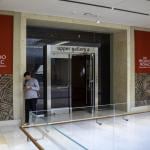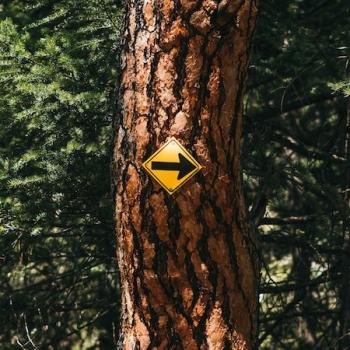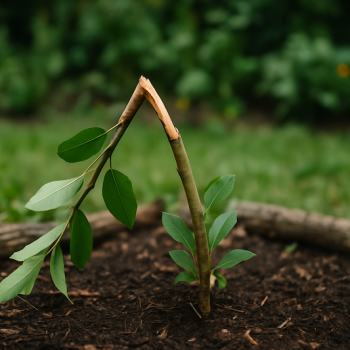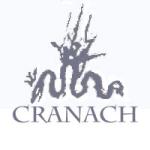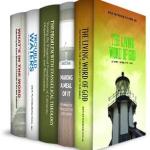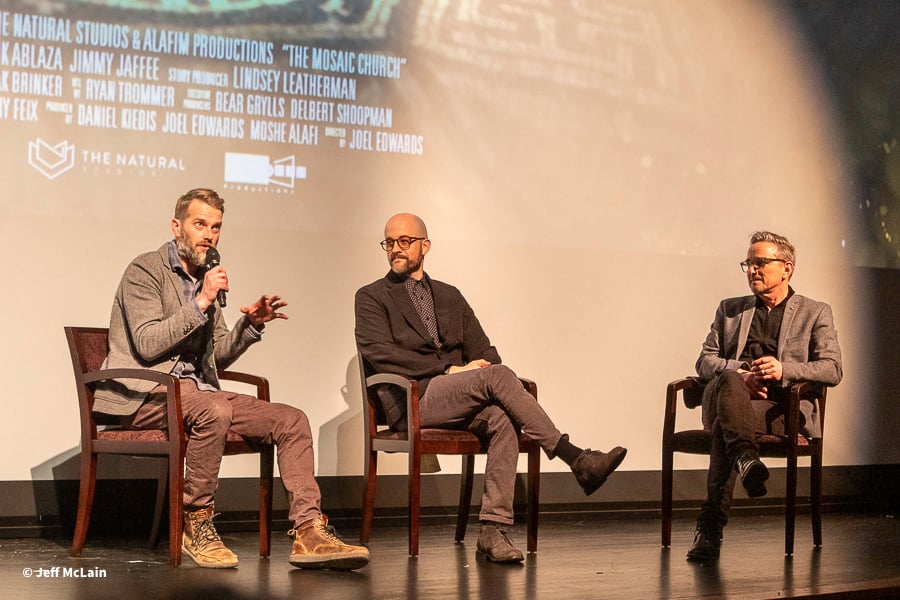
The Megiddo Mosaic on display at the Museum of the Bible (Washington, D.C.) is an invitation to journey back to the life of the church, at least 1,800 years ago, in the land of Israel during the reign of the Roman Empire. It is more than a glimpse into an artistic endeavor from an early church worship space, it is the chance to see the story of faith that united a Roman centurion, an artist, and five women. Their faith inspired them to create a beautiful, artistically and theologically rich mosaic floor and provide a table for the Lord’s Table, which was at the center of their life together and their communal practices of worship. The Megiddo Mosaic is dedicated to the “God Jesus Christ,” a dedication that is now the earliest archaeological evidence of Jesus being called God — outside of the scriptures, early confessions and patriarchs.
The Biblical Archaeological Society also describes the Megiddo Mosaic not only as “an extraordinary mosaic from the area of ancient Megiddo in northern Israel,” but signs its praises because it features “the earliest known inscription to identify Jesus as God” and as a result “the mosaic adds much to our understanding of early Christian communities in the Holy Land.” The many ways that this extraordinary archaeological find adds to our understanding of the early Christian communities are still being explored theologically and historically. As the Jerusalem Post remarks, “The mosaic…provides invaluable insights into the beliefs and practices of early Christians before the religion was legalized in the Roman Empire.” This prophetic witness of the early church is something you do not want to miss, and take note that it is only on display at the Museum of the Bible until July 6, 2025.
In my previous blog post, I recounted our visit to the Museum of the Bible in late January 2024, prompted by a Facebook post from Dr. Anthony L. Blair of Kairos University. In that reflection, I discussed how the experience exceeded my initial reservations and examined the Megiddo Mosaic’s significance as a prophetic witness to the contemporary church. Throughout this post, I will reflect on the Mosaic Church documentary screening event we attended at the Museum of the Bible and my reflections on the documentary.
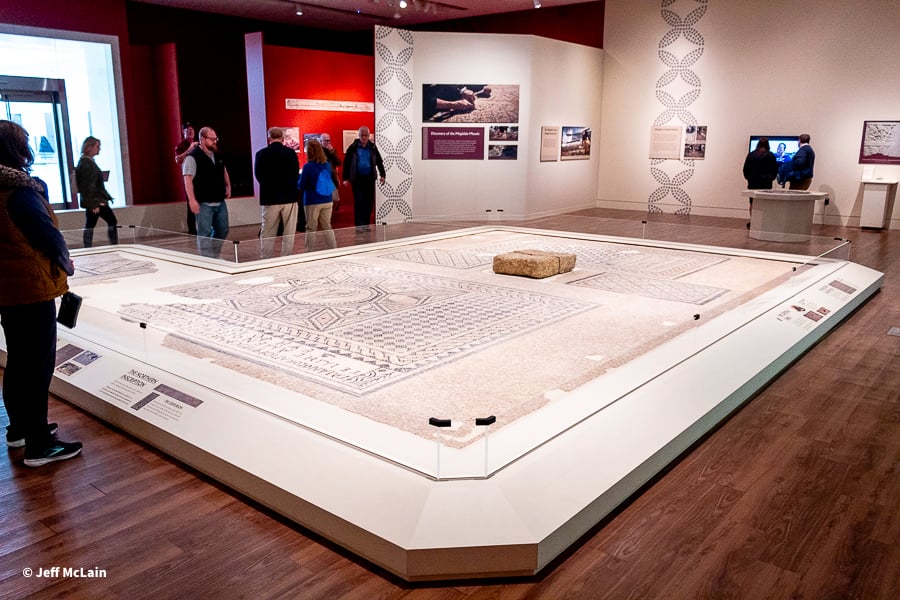
Another Day at the Museum of the Bible
Katie and I returned to the Museum of the Bible in February 2025 for another visit—this time without the kids—which allowed us to experience the museum a second time, but it also allowed us the opportunity to move slower through the museum so that we could take a few key areas in. We started the trip by again viewing A Virtual Reality Tour of the Lands of the Bible, which was as special this time as it was the first time – and it was so good to experience this without kids in our laps and ears. Like last time, we were drawn to exhibits with a strong historical focus, particularly The Megiddo Mosaic, People of the Land, and Stories of the Bible. This time, we skipped many of the other displays and exhibits, including The Impact of the Bible, as well as the Vatican Art, Children’s Room, and other sections. During our visit, Katie and I dedicated a considerable portion of our time to exploring the Megiddo Mosaic—spending nearly ninety minutes at the exhibit alone. Although we had seen it before, its allure never waned, and it continued to captivate us just as much as the first time. After we worked through our favorite areas, our brains were overwhelmed with information—and somehow, it was already 4:00 p.m. There is a lot to take in theologically, historically, and informationally. If you have not visited yet, be prepared for this reality. At 4:00 p.m., we stepped outside onto the National Mall. Stepping out on the mall after the rain, with some slightly warmer temperatures, gave our minds and rest some needed rest after a huge sense of overwhelming information.
The Mosaic Church Documentary Premiere
That evening, we returned to the Museum of the Bible for a special event at 5:00 p.m., featuring The Mosaic Church documentary. This documentary follows the story of the Megiddo Mosaic after its discovery. Narrated by Bear Grylls, Directed by Joel Edwards and Daniel Keidis of Evolve Studios, The Mosaic Church (2025) explores the site’s historical, theological, and political significance, featuring expert insights from historians and theologians that shed a light into the life and community of this early church gathering. Bear Grylls – increasingly becoming known for his faith – is mostly known for his survival expertise and adventurous spirit, showcased in Man vs. Wild and other survival shows like Running Wild and You vs. Wild. A former British SAS soldier, he has demonstrated extreme survival skills in the world’s harshest environments. Evolve Studios is an independent, full-service production studio that has earned six Emmy Awards and over fifty nominations, excelling across a wide range of formats and genres in entertainment and media. These proven storytellers acknowledged the support of the Museum of the Bible and Angel Studios in the making of this documentary – and Angel Studios is the online home for this work.
The first part of the night involved an after-hours walk through of the Megiddo Mosaic exhibit. Again, I wondered if seeing this floor for a third time – the second that day – might make it feel too familiar and less special. However, as we walked through the closed museum to get to the exhibit, standing there again, I could feel tears that welled in the corner of my eyes. I felt the presence of the Holy Spirit and the weight of conviction from that early church. I wasn’t just moved the first time I saw it—I was even more deeply moved the second and third time, as I found myself standing beside it and imagining the lives of those who worshiped there.
After exploring the exhibit, the next part of the evening saw us invited into a banquet room to join the producers and team members from the Museum of the Bible. The hors d’oeuvres and appetizers were exceptional. If you know me, you know cheese holds a special place in my heart, and the cheese spread and display were absolutely unmatched. In the banquet room, we had the opportunity to engage in conversation with the producers, take photos with the premiere red carpet and movie backdrop, and listen to opening remarks from the museum staff and executive directors.
From the banquet hall, we moved into the 472-seat World Stage Theater where remarks from museum staff and the producers were shared again, before watching the premiere. As the premiere started, I had hopes that the theological, historical, and apologetic significance of this discovery would be explored in the documentary more than how the mosaic was found, preserved, and transported to the United States. It was just that. The documentary delves deeply into the story and significance of this find with remarkable detail and reflection, and a quality production – a professional artistic story without the cheese factor that sometimes is associated with Christian filmmaking. Since returning home, I have watched the film again through the Angel Studios link I will share below, and even watching it a second time, I was still amazed by everything it covers.
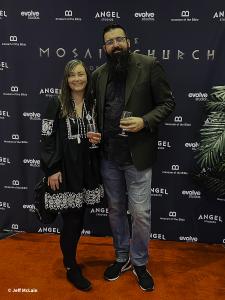
A Few Glimpses from the Documentary
This film does more than simply recount an archaeological discovery—it brings to life the context, resilience, and faith of early Christians who boldly gathered in the shadow of a Roman army training ground. Throughout the film, experts like Dr. Yotam Tepper highlight how the Megiddo Mosaic provides groundbreaking evidence of early Christian beliefs—not only with the earliest known confession of Jesus as God but also with early uses of artistic symbolism in the church. Theologians and historians, including N.T. Wright, emphasize the profound theological and historical significance of this meetinghouse. As a renowned biblical scholar and former Bishop of Durham, N.T. Wright’s insights into both the mosaic and the life of early Christian communities were among the most compelling parts of the documentary.
This site is now recognized as the oldest known church building ever discovered, as early Christian worship primarily occurred in synagogues, homes, and other private spaces prior to this find. The documentary skillfully intertwines history, theology, and personal accounts, making the past feel both tangible and relevant. For Katie and me, watching it deepened our understanding of the significance of this discovery—not just as an artifact, but as a window into the faith of those who worshiped under the threat of Roman persecution. It serves as a prophetic reminder of the movement we are part of today (which I delve into further in my previous post). The documentary’s never-before-seen footage of ancient worship sites truly brought the past to life in a way that was both immersive and thought-provoking. Even after watching it a second time at home, I remain in awe of how this third-century artifact connects us to the faith and devotion of early believers.
A Night at the Museum
There were opportunities for Q&A after the showing with the producers, which made for some interesting conversational fodder. As we exited the museum after the event, we felt very encouraged and super glad we made the trip. As a completely unrelated side note, there was something so cool about getting to walk out the museum late on a Thursday evening when every exhibit was locked up and lights were turned off. There was the eerie aspect that made us feel like we were in one of our favorite family films – Night at the Museum.
Don’t miss your opportunity to see the Megiddo Mosaic. As I shared before, I encourage you—no matter where you are in the country—to start making plans to see this floor for yourself. It is a powerful, prophetic reminder of the faith we belong to. It remains on display until July 2025, and I already have plans to see it at least one final time in June. Along with that, I also encourage you to take the time to see The Mosaic Church (2025) documentary.
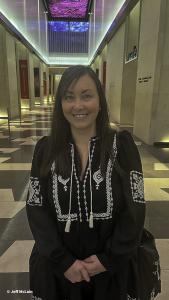
Closing Thoughts
This ancient mosaic is a testament to the enduring faith of early Christians, whose worshipful acts, even in the shadow of persecution, still speak to us as a prophetic witness today. It reminds us of the work we are called to do and the legacy of faith that continues to shape the church through the ages. I believe this history has the power to inspire us to live boldly, as those who came before us did, in the knowledge of God’s enduring love and truth. It also calls us to trust God to be faithful to work in, with, and through the church. It is a reminder to pray for the church. This church community is still speaking to us, generations later. God wants the same dedication and commitment from our churches today. On Sunday mornings at River Corner Church, we have been invested in a study through the book of Philippians. In considering the Megiddo Mosaic, I am reminded of Paul’s confidence in the church in Philippi when he writes, “I’m convinced that God, who began this good work in you, will carry it through to completion on the day of Christ Jesus” (Philippians 1:6, GW). May this witness to the way God carried a church through various circumstances and generations, inspire our confidence in what God is doing in the churches we worship in.
I also invite you to check out Shawn Paul Wood’s article on Patheos, Angel Studios’ Documentary on Megiddo Mosaic Unearths Faith.


